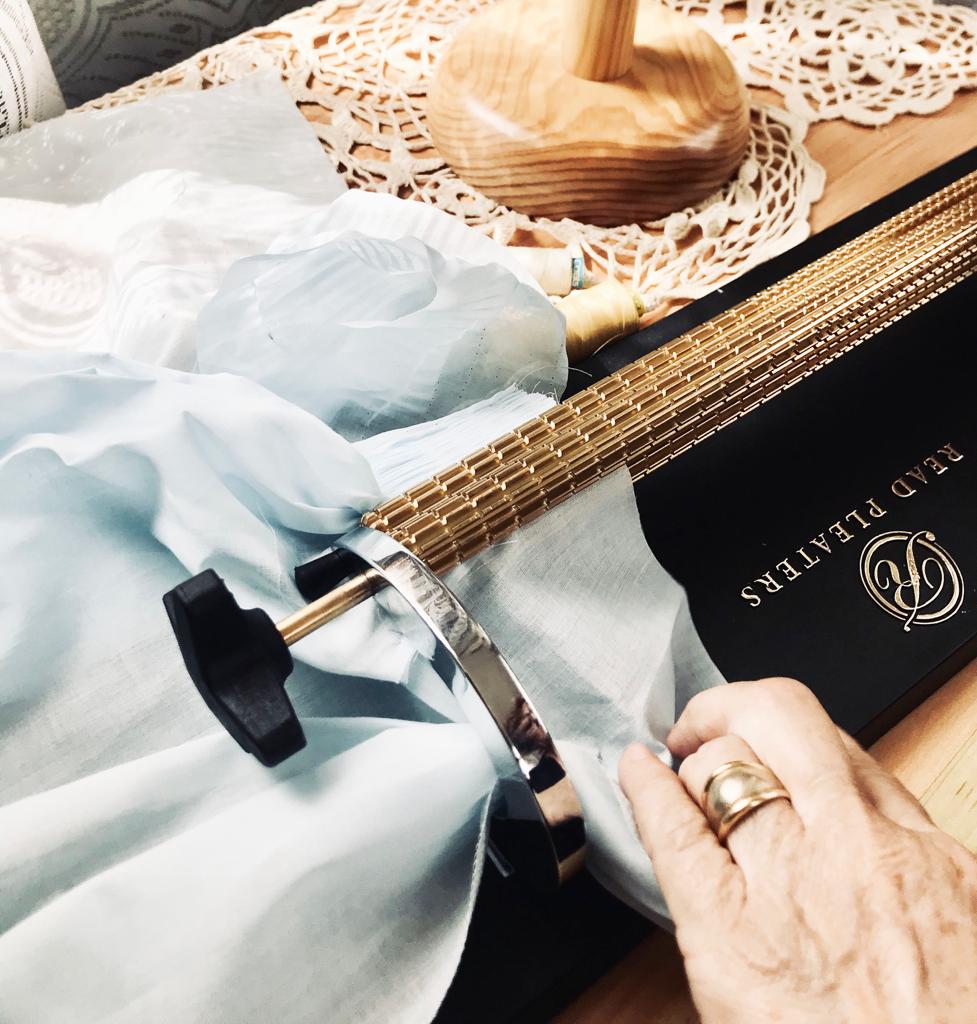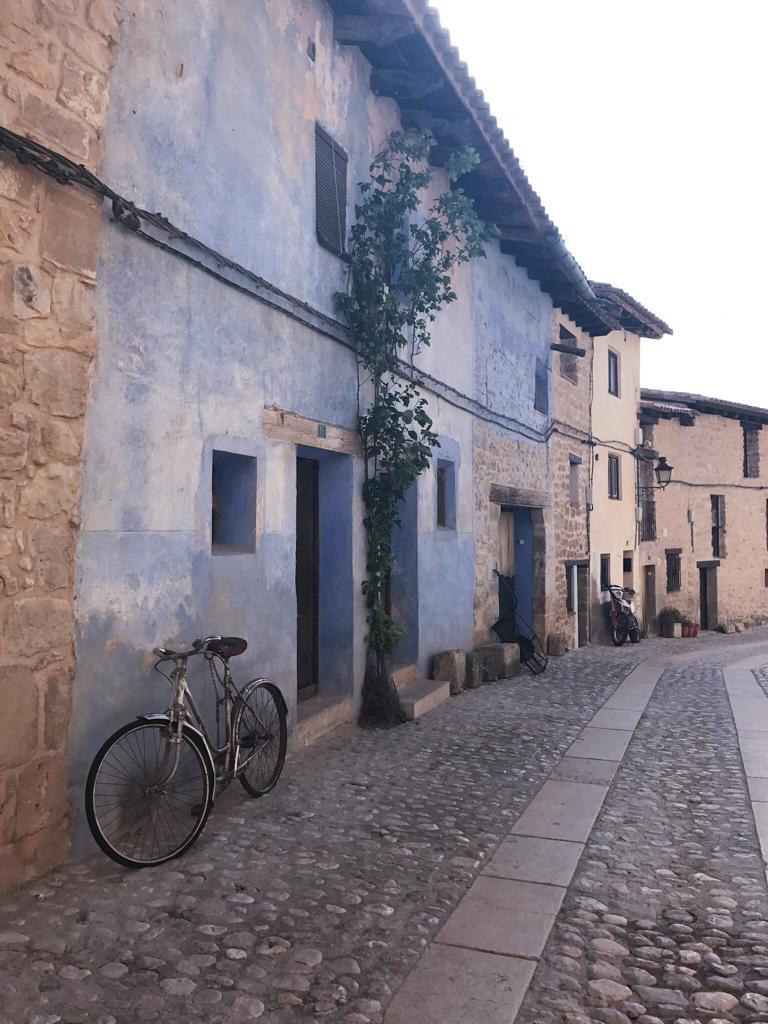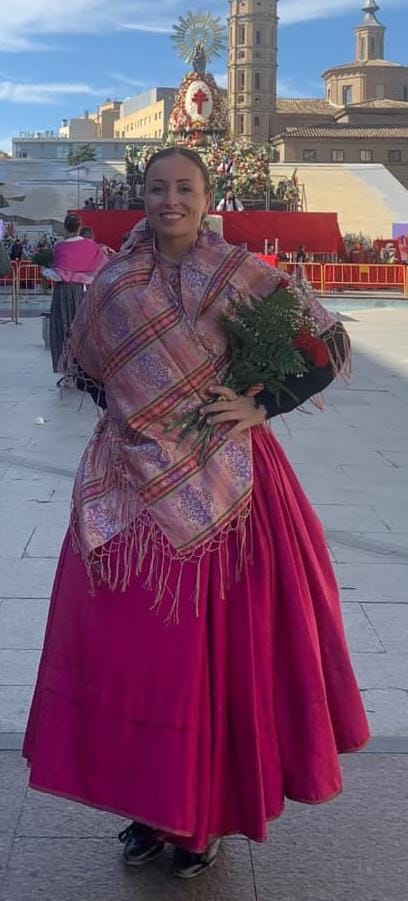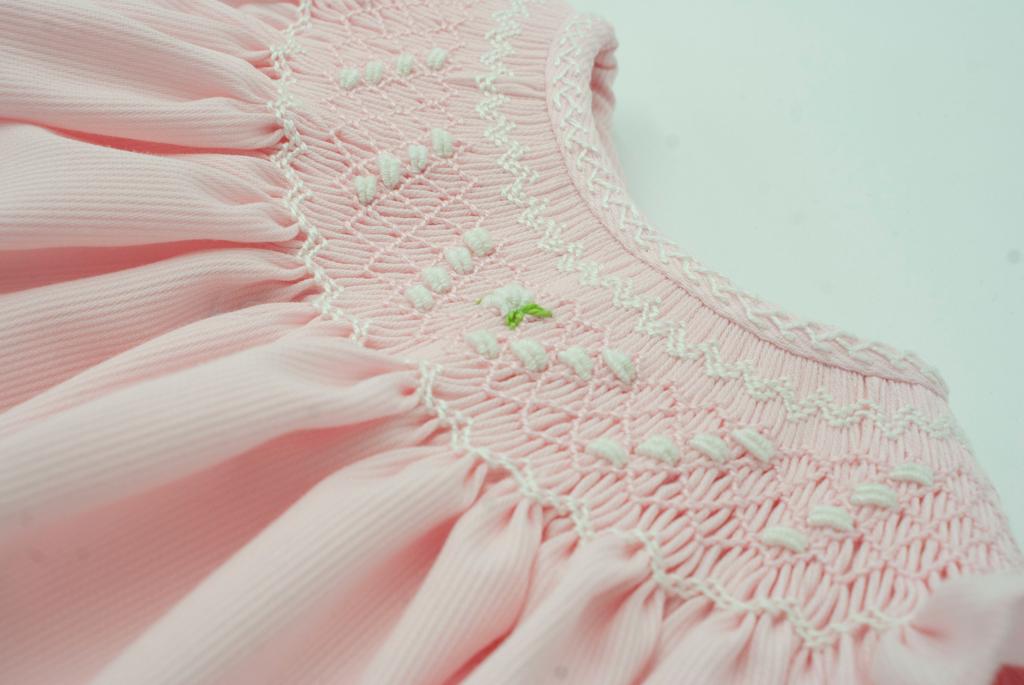The history behind the beauty
For centuries handsmocking has appeared as a notable yet somewhat understated part of fashion. Often being used as a detail to accent other more grand designs, however it can also hold its own as the centre piece of a “one off” garment. Hand smocking has been reinvented time and time again, and has never lost its charm.
Said to be found as far back as the 13th century we can notice the use of smocking -the tight folding of material into gathers- to create a fitted shape on women’s dresses, at the waist, sleeves and shoulders. Unlike many other fashion statements of past times, smocking was more commonly worn by working class society.
The elegant finish of smocking when decorated with embroidery and small stones meant that it became favourable over the years in high society dresses too. It is a technique that truly stands the test of time and knows no limits.

Picture shows Lola using a traditional smock machine to “pasar las bastas”- sewing threads through the material in consistently straight evenly spaced rows – creating the beautiful neat folds we all recognise. Traditional pleating machines are difficult to find and are very rarely used as production has moved on to an industrial scale using modern techniques.
Spanish Handsmocking and National Dress
Seen in the Mediterranean countries of Europe from around the 14th Century, it’s no wonder that smocking has been featured in many of Spain’s national dresses. We all recognise without hesitation the bold red and black spotted dresses of the “traje de flamenca”, but we are considerably less familiar with the “traje de chulapa” for example, coming from Madrid with it’s striking colours and use of lace and intricate detail on long corseted dresses.
Not only can smocking be seen all over national outfits in a small way, its worth taking notice of Spains love of rich colours and heavy embroidery, which we at Little Lola’s are using as inspiration in our collections. Head over to little-lolas.com to check out our own twist on the colour of 2022, Very Peri. We aim to combine these rich Spanish traditions of bright colours and heavy embroidery with the colours of the season. Combining a little bit of tradition with modern fashion.

“El Mantón” and the handsmocking
Detail, intricacy and bright colours are a cornerstone of Spanish fashion, nothing shows this as well as the “mantón de Manila”, a silk shawl which is worn throughout Spain. It was one of the most intriguing things I noticed when I saw my first “Fiestas del Pilar” in Zaragoza. The beautiful women with their detailed shawls so elegantly draped over their shoulders left me stunned. Not realising the level of craftsmanship that went into creating this work of art, I proceeded to look in a shop window at a “standard” mantón, quickly realising (from the price), this was not an appropriate luxury to have as a beach cover-up like I originally thought.
The most worn mantón is usually black or white with large red flowers and small leaves which frame them perfectly. The Mantón has much in common with the traditional hand smocking in that in previous times they both moved easily through different levels of society. Smocking was worn by workers and often the poorest people all the way to the top of the social classes. The same can be said about the manton for instance, as generally the purer the silk and heavier the embroidery, the closer you were to the level of the royals.
Individual stitches are very apparent in the mantón. If you look closely you can see the resemblance to the stitch patterns used in many handsmocked designs.

A traditional mantón in an understated gold with floral embroidery. Worn by Irene, a Jota dancer from Zaragoza, Spain.
Why do we love hand smocked clothing so much?
Traditionally smocked clothing is comfortable which makes it perfect for babies, but this only part of the reason we have been drawn to its beauty for so many years. Previously, embroidery designs would be limited to geometric shapes but this soon faded as designers became more creative. Weaving floral patterns and varied shapes of choice into the smock become fashionable. Making smocking a staple for parents as there are so many options to choose from, a style to suit every taste.
A garment which features a hand smock has a certain look of elegance, even if made on a very basic material it will look ten times its value. Smocking is perfect for a special event but also for daily wear. Children can look well dressed but casual at the same time. Popular for summer dresses and rompers when you go on holiday to keep babies cool but equally as popular on very ornate christening gowns.

An example of handsmocking using Lola’s own embroidery design featuring a single flower in the middle. Designs such as this, are perfect to give a bit of life to a simple block colour but also can be sewed in deep, bold colours to stand out against a very busy fabric.
It’s undeniable that when we speak of Spanish fashion, handsmocking is the image at the forefront of our minds. It has withstood the test of time and has earned its popularity. A style which will remain in fashion for many years to come.

